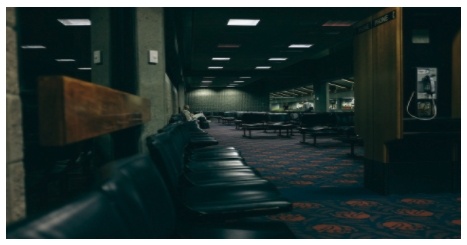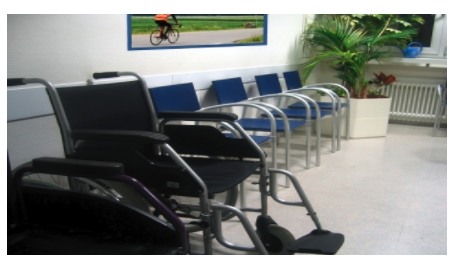
It’s that time again, time to take off the dental professional’s cap and become the patient. People discover what is the perfect fit for them through feel. Think about it. We all navigate the world by feeling it out, asking ourselves if this new house is the right one by walking through it and hoping for that part of us to feel at home. Or if this new car is really for us by taking it for a test drive. The words salespeople use are just that– words. It’s how their product makes us feel that compels us to give the product or the service a chance.
This is a lot more pronounced when it comes to our health care. We want to feel safe. We want to feel calm. We want to feel taken care of. We talk about first impressions a lot, and that’s because first impressions are everything. We judge by the first impression. Why? Because that first feeling we get drives us to make the next decision and if that feeling is a bad one, the next decision is going to be “no, I’m going somewhere else.”
Your waiting room is your first impression. Yes, we have been down this road before, but let’s put aside colour schemes and shapes and smooth or rough surfaces for a moment and focus on feeling. We are all patients and we have all experienced waiting rooms that made us feel welcome and safe while experiencing others that have made us feel like we are less of a person and more of a number. Unfortunately, we tend to remember the bad experiences over the good ones, so with that in mind, what did that bad experience look like?
Did it look like this?

How about this?

Just looking at these photos brings up some bad memories for me. In the one above, the design is very similar to the waiting room I had to endure at the hospital — dark morbid lighting, heartless design, a place that screamed: “GET OUT!” This type of design is more for an airport or a bus station, not a healthcare facility.
The second one, though brighter, is cold and detached. The chairs don’t even look comfortable. Have you ever tried to sit for a half hour in an uncomfortable chair? It is not pleasant, and if you have, you definitely know what I mean. There is a lot of shifting and groaning and staring at the clock on the wall, hoping to God someone will come by soon to get you out of this Hell. That is exactly how I felt. And worse, I had already made up my mind about coming back: I wasn’t going to.
Patients do not respond well to either of these designs. They are emotionless and communicate their utter dislike of people. In The New Waiting Room Design, an article by Cheryl Janis, she suggests that patients are looking for something else when they arrive at a dental practice. Believe it or not, they are looking for a waiting room that reminds them of home. Janis has quite a few design tips in her article that can be found in the resources section of this post, but we are going to look at the three aspects of a new design in regards to how they will make the patient feel. Keep in mind that making just a few adjustments to your waiting room can earn you a lot more loyal patients in the future.
Lighting
In the photo of the dark waiting room, I commented on how that lighting choice made me feel like the waiting room was ordering me to get out. But more so than that, having to sit in that darkness also made me feel abandoned, isolated from the practice, and I just wanted to go home. However, too much light, light that is white and reminds me of a hospital room is also a deterrent. I can tell that no one cares what happens in the waiting room simply by the cold and emotionless design. Lighting that leaves you in the dark literally only helps amplify those feelings of being in the dark about your oral health, which can, in turn, increase stress-levels. Lighting that’s too bright also has that effect. Bright doesn’t necessarily mean warm, either. In the case of the photo above, it can feel like you’ve been tossed out into the cold. Another thing to remember when it comes to lighting and what might not come up as often in casual conversation is that harsh fluorescent lights can trigger migraines. Since 70% of all Canadians have some form of migraine condition (like me), the lighting you choose should attempt to accommodate them.
In Janis’ article, she suggests layering your lighting “with options such as floor lamps, table lamps, task lighting, wall sconces, spotlights and mood lighting. You don’t have to use all of these—just make sure you’re not depending on a single lighting source for the entire room.” But why? What exactly does this do? Well, according to the article, “because our body clocks naturally respond to the shadows and varying degrees of light in the same way we respond to the changes in natural light throughout the day.” This gives the room a cozy relaxing feel your patients will respond positively to.
Artwork
A waiting room without artwork is a waiting room without character. Bland white walls are stress-inducing. According to Janis’ article, “the nerve cells in that opiate-rich pathway at the base of the brain that leads from the visual cortex to the parahippocampal area become active” in response to universally preferred scenes in an artwork. In other words, artwork takes patients’ minds off their fear, their stress, and the pain they could possibly be enduring at the time. How does the scene below make you feel? Did you forget your troubles for just a few seconds? I know I did. When I came across this image in my search, I found myself stopping and forming my mouth into an “ooh” shape in response to the calm beauty.

For patients, this brief break away from their stressful thoughts and worst-case scenarios is a must, not only for their own mental health but for the entire appointment going forward. It is much easier to discuss any issue when your patient is calm and not internally freaking out.
Temperature
I bet you’re thinking “I know this one!” And honestly, I hear it all the time, too. Keep the colours warm. But there are issues with this. The warm colours of red, orange, and yellow can sometimes induce the opposite effect in patients. In researching for another article, I came across a waiting room design that blew my mind! The walls were a bright orange, the artwork red and yellow, the chairs dark red. You can’t get warmer than that, right? It was like the entire waiting room was on fire. While looking at it, I wondered to myself why I didn’t feel quite right. I felt anxious. Well, besides the fact that being surrounded by flames isn’t exactly relaxing, after reading Janis’ article, I learned that a waiting room that runs too hot or too cold (yes, that’s a thing too) can make us feel anxious and nervous; instead, she suggests finding a balance of warm and cool colors; “Mix up the color palette of your design elements with things like plants and nature landscape photography with blue oceans or lavender flowers.”
How your waiting room makes your patients feel affects their decisions. So give your waiting room a revamp by adding colour, layered lighting, and character and make it so that your patient’s next decision is a resounding, “I am definitely coming back!”
Have a great weekend everyone! If you have any helpful waiting room design tips, please share them with us in the comments section below. Also, check out The New Waiting Room Design (link below) to get even more great design tips.
Resources
Suggested Page



